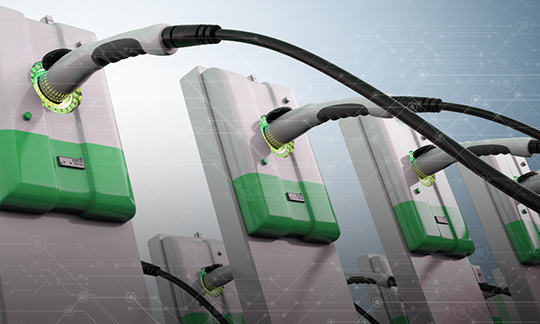The world is moving toward electric drivetrains for all forms of personal and commercial road vehicles. Commitments from global leaders toward zero emissions could see the last internal combustion engines being produced as early as 2035. E-mobility represents a huge opportunity for automotive OEMs, from well-established brands to new and disruptive start-ups. Consumers can see this reflected in the number of fully electric vehicles (EVs) being brought to market right now.
But change is seldom without friction. For the end user, this brings new concerns about where and how long it will take to recharge the batteries of an EV. While the range of EVs continues to increase, the need to charge will always be present.
Building the infrastructure needed to support the widespread adoption of battery electric vehicles (BEVs) requires investment. There is commitment to the e-mobility transition coming from governments and private companies. This creates a huge opportunity to become a key provider in the EV charging infrastructure value chain.
Avnet is ideally placed along this value chain and ready to provide customers with the solutions, guidance and support they need. The solutions available come from across the breadth of Avnet’s regions and businesses including Avnet America, APAC and EMEA, all three speedboats (Avnet Abacus, EBV, Avnet Silica), Avnet Embedded and Avnet’s software companies: Witekio and Softweb.
Learn more about what Avnet offers to support EV charging solutions or see content listing below.
Avnet Creates Content to Support EV Charging Solutions
Whitepaper provides the global perspective from Avnet’s SMEs
EV charging can be seen as the fourth global transport infrastructure. Nothing this significant and impactful has happened in transport since the development of railway networks. To reflect the significance of EV charging, Avnet has created a whitepaper that captures the viewpoint of subject matter experts from across our global organization.
All regions are seeing incredible growth in EV charge point roll-out. This has a positive impact on the supply chain that supports charge point operators. The EV charging supply chain pivots around the electric vehicle supply equipment (EVSE) and the manufactures, large and small, developing EVSE. Avnet has solutions at every level to help EVSE manufacturers bring new solutions to market.
The focus of this whitepaper is to provide visibility into the EV charging infrastructure supply chain and show how every part of Avnet can support customers at every level.
Comprehensive linecard brings visibility across Avnet
Avnet has many suppliers that are now actively addressing the EV charging market. This includes suppliers of connectors, power semiconductors, microcontrollers and microprocessors, displays, passives and other integrated and discrete components. Avnet Embedded also has a range of solutions for the EV charging infrastructure and EVSE manufacturers.
Check out Avnet’s comprehensive linecard that provides greater visibility of the company’s services and suppliers in this application space.
Additional articles provide a deeper dive
In addition to the whitepaper and linecard, Avnet has produced four additional articles providing both a higher-level overview of industry challenges and a deeper technical dive into the design aspects of EV charging. They can be found here.
- ‘Predicting the kW sweet spot in EV charge point variants’ – This article recognizes that not all EVs are charged in the same way, and not all EV charge points can deliver fast charging. The challenge here is for EVSE manufacturers to predict where demand is coming from and what Charge Point Operators (CPOs) will want.
- ‘Load balancing in the EV charging infrastructure’ – The need to manage access to the grid will become more important as more people make the switch to fully electric vehicles. As an industry, there are efforts in place to explain why load balancing is important and how it can be implemented.
- ‘Designing ultra-rapid DC EV chargers’ – Many EVs, particularly commercial vehicles, will need access to rapid DC charging. These charge points are designed to deliver much higher levels of power and with that comes additional design considerations.
- ‘Defining security for the EV charging infrastructure’ – One aspect of EV charging that must be common across the entire infrastructure is the implementation of security. Payment details are one part of this, but there are other issues to consider, such as protection of personal data.












